VOL.196 SEPTEMBER 2024
JAPAN’S ENJOYABLE PUBLIC AQUARIUMS
[Treasures of Japanese Culture] The charm of Japan’s roads: historical roads, modern Michi-no-Eki, etc.
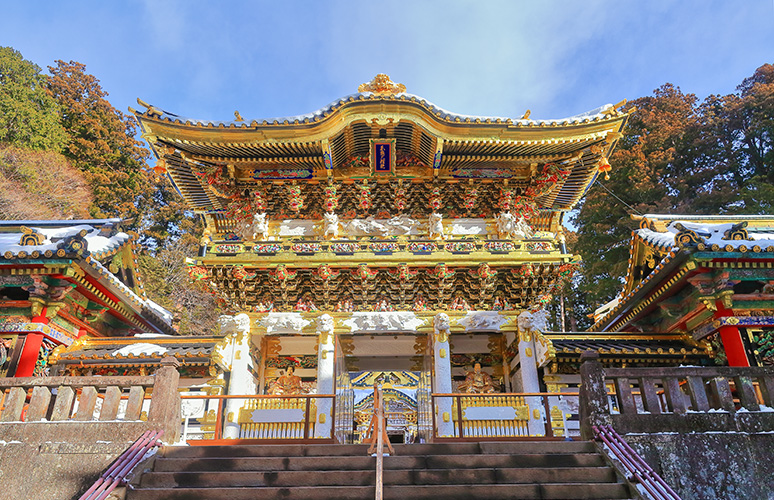
Nikko Toshogu Shrine is dedicated to Tokugawa Ieyasu, the first shogun of the Edo Shogunate. Nikko Toshogu Shrine and other nearby sites are registered as the World Heritage “Shrines and Temples of Nikko.”
Ruth Marie Jarman, born in North Carolina but raised in the US State of Hawaii, has lived in Japan for over 35 years. She has worked on projects supporting the inbound strategies of Japanese companies and local governments, and is also a member of the Edo Kaido Project Symposium, which conveys the charm of the historic kaido roads* in the Tokyo area. This month, we requested her to discuss kaido roads and "Japan’s roads."
One of the most popular tourist destinations for Internationals visiting Japan is Nikko Toshogu Shrine in Nikko City, Tochigi Prefecture. The shrine is dedicated to Tokugawa Ieyasu, who founded the Edo shogunate in 1603, and is also known as a World Heritage Site. However, while many people visit Nikko as a destination, few know that there is a historical kaido road connecting Tokyo and Nikko.
From the 17th century onward, the five kaido roads were built to transport people to and from the provinces, centering on Nihon-bashi Bridge** in Edo, which is now Tokyo. Shukuba-machi, or lodging towns, were scattered along the kaido roads and developed as places for the exchange of people and goods. The Nikko Kaido, one of the five kaido roads, connecting Nihon-bashi and Nikko, has 21 lodging towns, including Koshigaya and Utsunomiya, where visitors can enjoy local specialties and sweets.
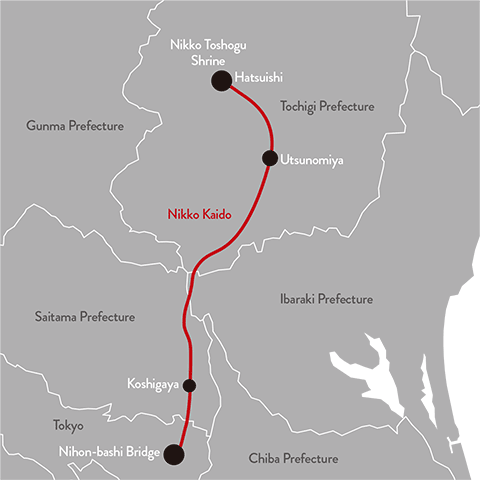
If you take the limited express train or highway bus, you can reach Nikko in a few hours from Tokyo, but if you have time, it might be fun to take a local train or rent a car and tour the towns along the kaido road, experiencing the history. By viewing your destination not as a “point” but as a “line” leading to it, you will be able to enjoy your trip much more.
With the same approach, I would like to recommend a trip to “Michi-no-Eki” *** (roadside stations), which are scattered throughout Japan. “Michi-no-Eki” is a combination of parking lots and commercial facilities along national highways in various regions. In addition to being used for rest stops on road trips, more and more people are going out of their way to visit “Michi-no-Eki” as destinations in themselves.
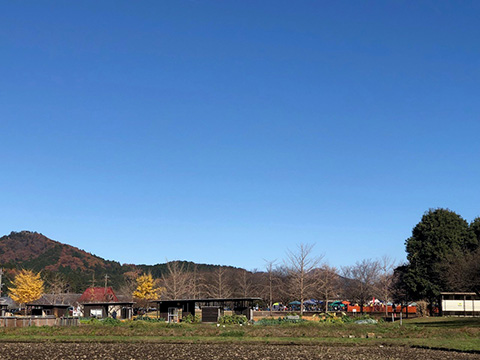
Photo: Ruth Marie Jarman
The charm of “Michi-no-Eki” is that you can encounter genuine, non-touristy Japanese localness. Like a farmer’s market, it has a unique local atmosphere, and many locals also use it as an alternative to a supermarket, as they can purchase specialty products and freshly picked vegetables.
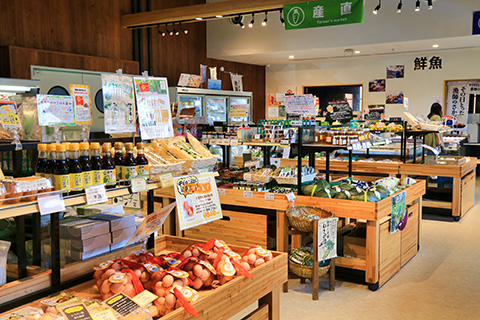
I also find “service areas,” which are rest areas on Japanese highways, interesting. They are similar to “Michi-no-Eki” where you can buy local specialties, but there are also service areas with a little playground and unique restrooms, making them a fun stopover during your drive. Since many people dress relaxedly while driving, I often tell foreign visitors to Japan, “If you want to see Japanese people in their everyday clothes, go to a service area.”
I think many Internationals who have lived in Japan for a long time rarely drive a car in Japan. It used to be like that for me as well. But during the COVID-19 pandemic, I wanted to drive in Japan, so I went to driving school as a way to learn Japanese as well. After getting my license, I took the Shinkansen bullet train to Morioka in Iwate Prefecture, and from there I rented a car and drove around the coastal towns of the neighboring prefectures, Miyagi and Fukushima prefectures. Japanese highways are easy to drive, and I enjoyed beautiful scenery and tasted gourmet seafood. I wish I had gotten a Japanese driver’s license earlier.
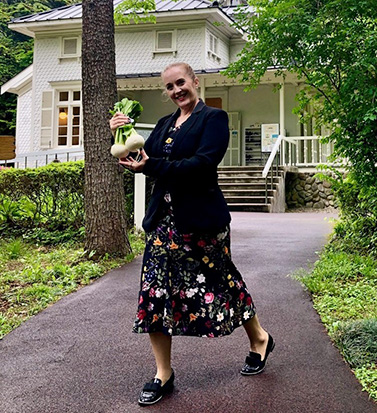
Photo: Ruth Marie Jarman
Places that are difficult to visit by public transportation can be visited freely with a car. Please try to visit places in Japan that you have not yet seen through trips that are a “line” rather than a “point.”

Ruth Marie Jarman
An American-born entrepreneur raised in Hawaii, Jarman joined Recruit Co., Ltd. in 1988 and has lived in Japan for over 35 years. She began her career in translation and interpretation as a small business owner in 1992. She is currently the CEO of Jarman International KK and has published six books on Japan. She serves as an Independent Director on boards at three publicly listed Japanese corporations, is one of the rare non-Japanese holders of the Japanese Takken Real Estate license and appears in various media including NHK Word Radio’s “Living in Japan”. In 2024, she was appointed a member of the NHK International Broadcast Programs Council and continues to support Japan’s internationalization in a variety of capacities.![]()
* Major administrative and transportation roads connecting central and rural areas and towns to each other. Japan is famous for the Gokaido, the five kaido roads built during the Edo period (from the early 16th century to the mid-late 19th century), which are the Tokaido, Nakasendo, Koshu Kaido, Oshu Kaido, and Nikko Kaido.
** Constructed in 1603, Nihon-bashi Bridge stands in Chuo City, Tokyo and has marked the starting point of Japan’s major highways for some 420 years. See “Renowned Nihon-bashi Bridge, Traffic Origin on Japan's Major Roadways” HIGHLIGHTING Japan, September 2023.
*** See “JAPAN’S ROADSIDE STATION: MICHI-NO-EKI,” HIGHLIGHTING Japan, August 2023.
By Ruth Marie Jarman
Photo: Ruth Marie Jarman; PIXTA

